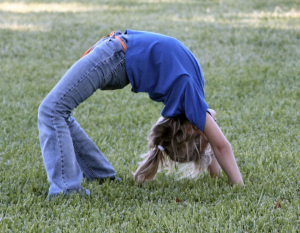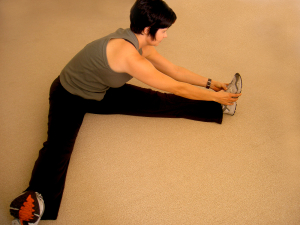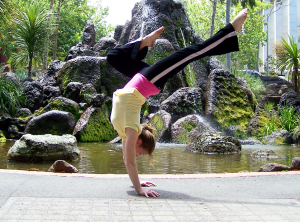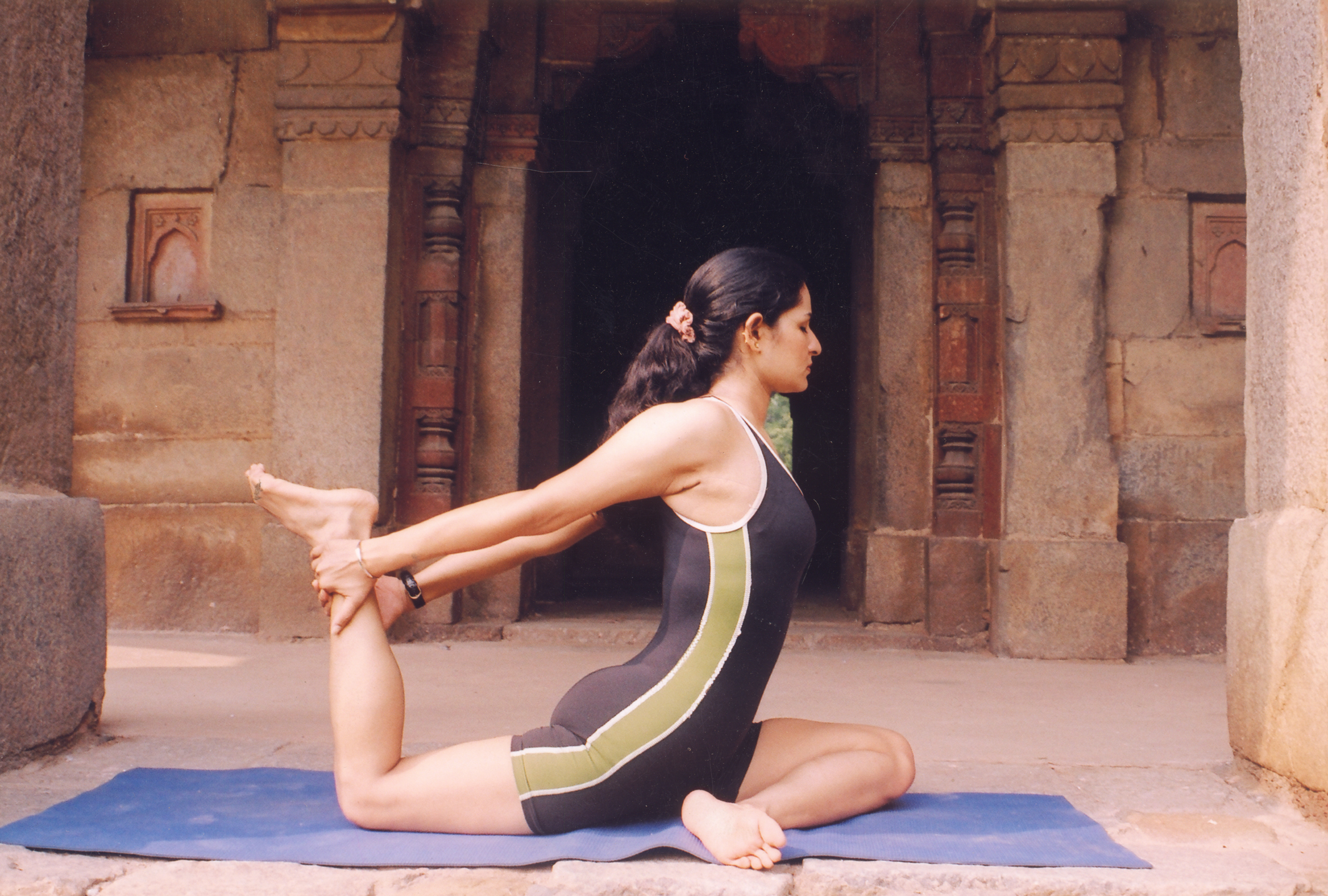 Flexibility training aims to increase a joints range of motion (ROM). There is a difference between active and passive ROM, with active being the ROM produced by the athlete by contracting their muscles (straight leg lift) while passive ROM is the range produced using an external force (sit and reach). It is active ROM that affects performance, though passive ROM stretches can be used to increase active ROM. Flexibility training affects performance by allowing the athlete to use correct technique in skill execution and preventing injury. It allows the 100m runner to enough active ROM in the hip flexors a
Flexibility training aims to increase a joints range of motion (ROM). There is a difference between active and passive ROM, with active being the ROM produced by the athlete by contracting their muscles (straight leg lift) while passive ROM is the range produced using an external force (sit and reach). It is active ROM that affects performance, though passive ROM stretches can be used to increase active ROM. Flexibility training affects performance by allowing the athlete to use correct technique in skill execution and preventing injury. It allows the 100m runner to enough active ROM in the hip flexors a
nd hamstrings for full knee lift and hip extension required to achieve full stride length and optimise speed and power. Greater flexibility also reduces an athlete’s chance of injury. This is because increased ROM means the joint can move through a larger angle before a strain or sprain occurs. However, immediate stretching during a warm-up does not prevent injury, it is the more sustained stretching program, which could be done during every warm-up, which increases ROM and helps prevent injuries such as a strained hamstring. There are four general methods used to develop flexibility: static, ballistic, PNF, and dynamic stretching.
 Static stretching is when a muscle is stretched to a length that is uncomfortable, NOT painful, and held for a given length of time. The optimal time to hold the stretch is between 30 and 60 sec. This is the most common form of stretching and is most suited for sports where the muscle is stretched for prolonged periods of time. A common static stretch is to touch your toes. These sports include: gymnastics, acrobatics and bodybuilding.
Static stretching is when a muscle is stretched to a length that is uncomfortable, NOT painful, and held for a given length of time. The optimal time to hold the stretch is between 30 and 60 sec. This is the most common form of stretching and is most suited for sports where the muscle is stretched for prolonged periods of time. A common static stretch is to touch your toes. These sports include: gymnastics, acrobatics and bodybuilding.
Ballistic stretching involves a bounce or swing. This type of stretch should only be performed by elite level athletes, and after a proper warm up and stretch. This type of stretching has potential to cause injury. An example would be to swing your leg forward multiple times to get your toes to your hand. This method of flexibility training is most suited for sports that require bouncing or swinging movements. These sports include: kicking in Australian Rules Football, dance, gymnastics, and skipping.
Proprioceptive neuromuscular facilitation (PNF) stretching involves a static stretch (30 sec), followed by a contraction of the stretched muscle until the stretch is no longer felt (usually around 5-10 sec), then a further lengthening of the muscle to hold another static stretch (10 sec). This method of training allows greater lengthening of the muscle by switching off the stretch reflex in the muscle. It is important that the second lengthened stretch is not taken too far, as this could result in injury. An example would be to put your leg up on a chair, stretch your hamstring for 30 sec, perform an isometric contraction by pushing your heel down against the chair until the uncomfortable nature of the stretch is diminished, then further lengthen your hamstring and hold the stretch for another 10 sec. This method of training is most suited to sports where the athlete’s joint may be forcefully taken beyond the active ROM. These sports include: rugby, Australian Rules Football, Ice-Hockey, and American Football.
Dynamic stretching is when an athlete performs movements that take their joints through their ROM to produce temporal stretches of selected muscles. These movements are continuous and the stretch is not held. This type of stretching simulates most closely the movements and stretching involved in the majority of sports and is often used during a warm up. An example would be a walking lunge, where the athlete performs a lunge movement that stretches the hip flexor and hamstring muscles as they move forward over 10 metres stretching both legs as them move. This method of training is most suited for most sports as it replicates movements used in performance. These sports include: soccer, rugby union, martial arts, and netball.[1]
[1] http://www.sport-fitness-advisor.com/dynamic-stretches.html

